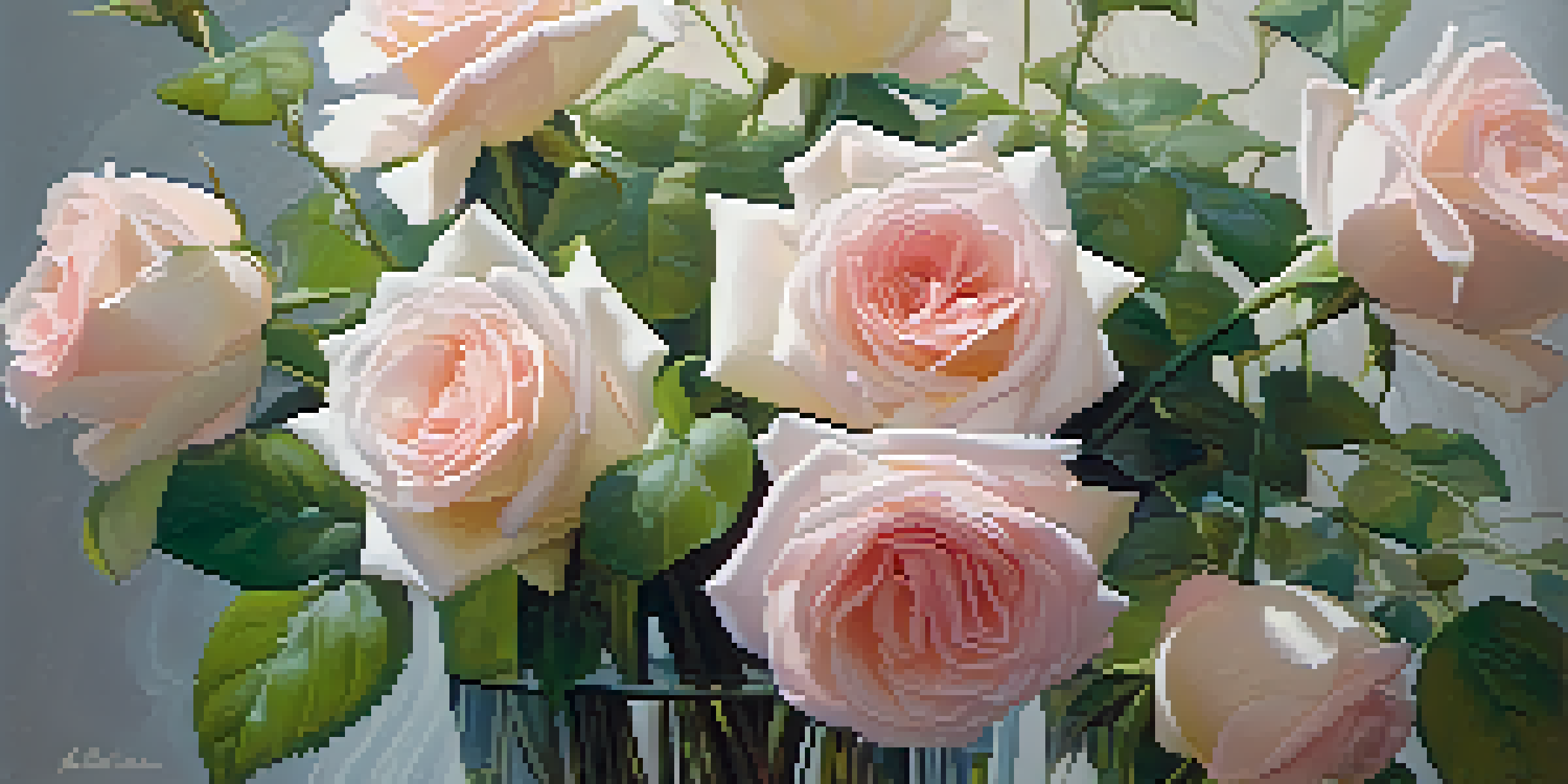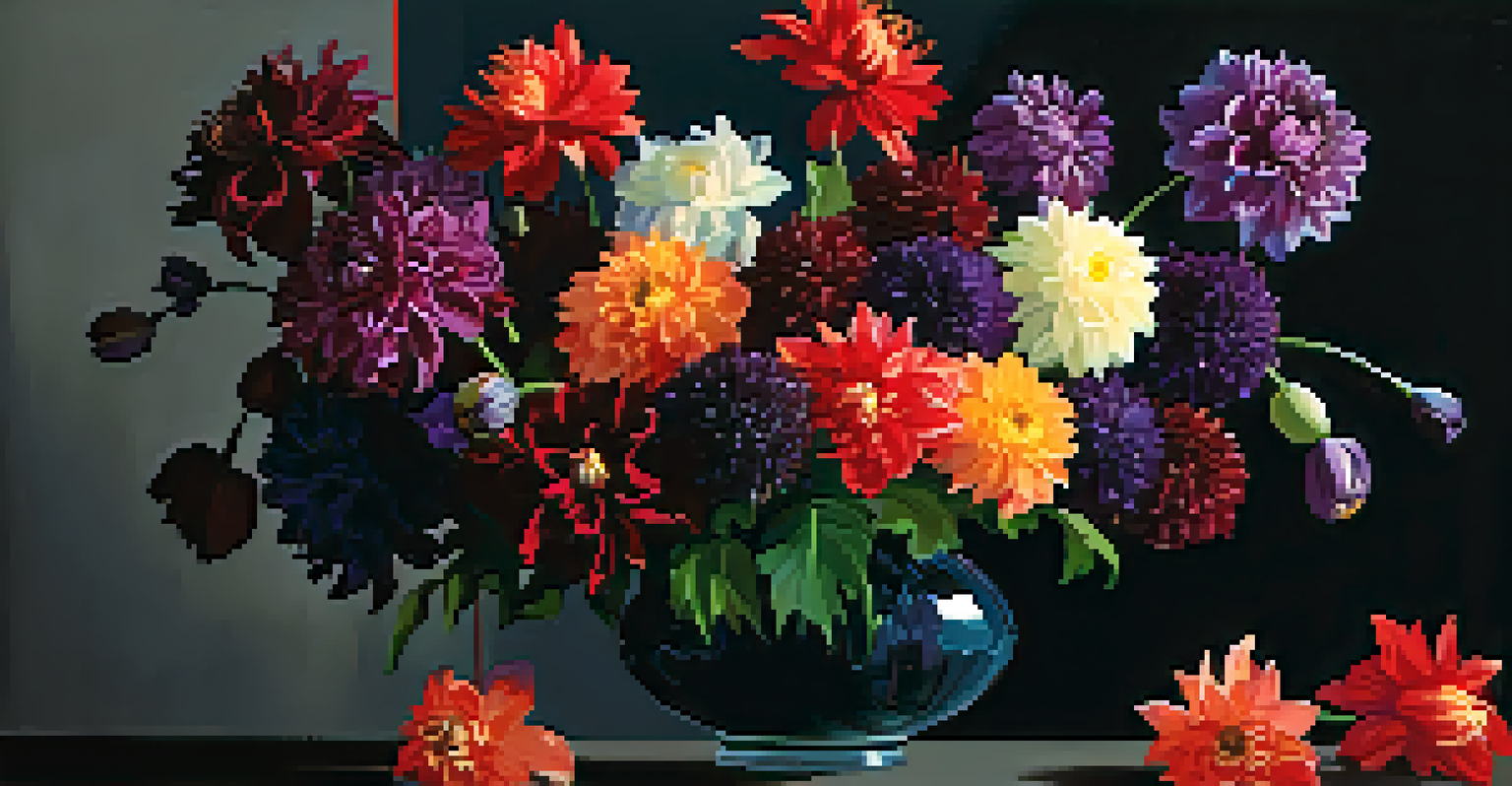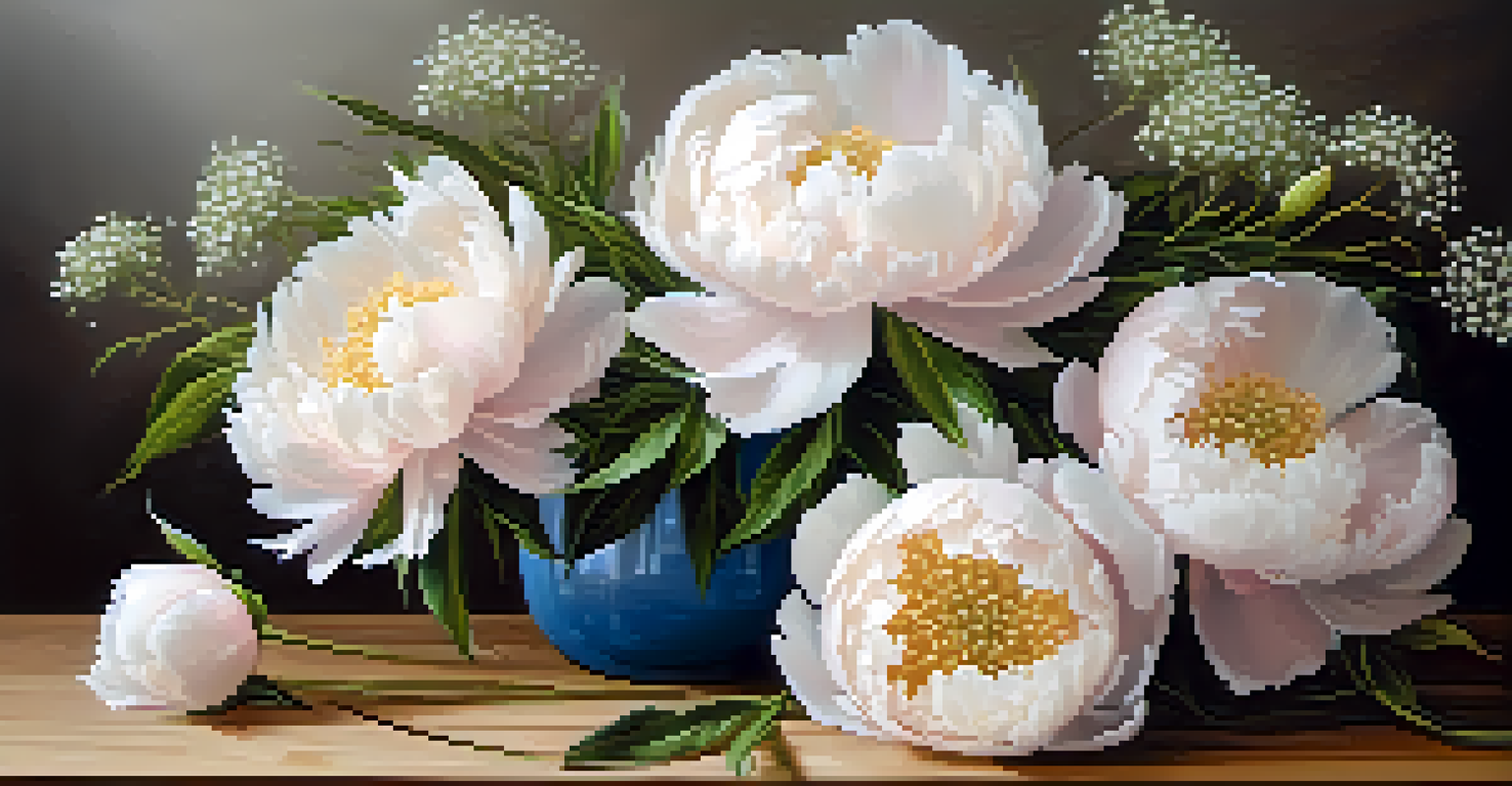The Art of Using Negative Space in Flower Arranging

Understanding Negative Space in Flower Arranging
Negative space refers to the empty areas surrounding the flowers in an arrangement. It plays a crucial role in highlighting the beauty of the blooms themselves. By allowing space for the eye to rest, negative space can create a more balanced and visually appealing composition.
The beauty of the flowers is enhanced by the space around them.
Think of negative space as the silent partner in your floral design. Just like a well-composed photograph, where the background enhances the subject, negative space in flower arranging allows the viewer to appreciate the flowers without overwhelming them. This technique can transform a simple bouquet into an artistic statement.
Using negative space effectively can also evoke emotions and convey messages. For instance, a sparse arrangement might suggest elegance and simplicity, while a denser composition could convey abundance and joy. Understanding this concept is key to mastering floral design.
The Importance of Balance in Arrangements
Balance is a fundamental principle in any form of art, including flower arranging. In floral arrangements, achieving balance means distributing the visual weight of your elements evenly. This is where negative space can be particularly beneficial, as it helps to offset the heavier floral components.

Picture a seesaw: if one side is loaded with flowers, the other side can use negative space to create harmony. This careful balancing act keeps the arrangement from feeling cluttered or chaotic. Instead, it allows each flower to shine in its own right, creating a more cohesive look.
Negative Space Enhances Floral Beauty
Negative space highlights the flowers in an arrangement, allowing for a more balanced and visually appealing composition.
To achieve balance, consider the size, color, and shape of each flower you use. Incorporating negative space allows you to create visual interest without overcrowding the design. Thoughtful placement of both flowers and empty space leads to a more dynamic arrangement.
Choosing the Right Flowers for Negative Space
Not all flowers are created equal when it comes to utilizing negative space. Some blooms are naturally larger or denser, making them focal points, while others are lighter and more delicate, perfect for filling negative spaces. Selecting the right flowers is essential for achieving your desired effect.
Simplicity is the ultimate sophistication.
For example, consider using larger flowers like peonies or sunflowers as focal points. These can be positioned strategically, leaving room for smaller, airy blooms like baby's breath or ferns to fill the gaps. This combination enhances the overall flow and maintains visual interest without feeling overcrowded.
As you choose your flowers, think about their colors and textures as well. A mix of vibrant and muted tones can create depth and dimension, while contrasting textures can draw attention to the negative spaces. Experimentation is key in finding the right balance for your arrangements.
Using Color to Enhance Negative Space
Color plays a significant role in how negative space is perceived in flower arrangements. Light colors, such as whites and pastels, can create a sense of openness and tranquility, while darker hues may make the spaces feel more intimate. Understanding this can help you craft the right mood for your arrangement.
For instance, a bouquet dominated by soft pink roses paired with lush green foliage can create a serene and airy feel, accentuating the negative spaces beautifully. On the other hand, a dramatic arrangement using deep red and purple flowers might evoke passion and intensity, where negative space adds an element of surprise.
Balance is Key in Floral Design
Achieving balance in flower arrangements involves distributing visual weight evenly, where negative space plays a critical role.
When selecting colors, consider how they interact with one another. Complementary colors can enhance the flowers you choose, while contrasting colors can make the negative space stand out even more. Use color intentionally to evoke the desired response from your audience.
The Role of Texture in Floral Design
Texture is another vital element in flower arranging that works hand-in-hand with negative space. Different flower varieties and foliage can add layers of texture, making the arrangement more visually appealing. This interplay between texture and negative space can create captivating designs.
Imagine a bouquet that combines smooth, velvety roses with the rougher texture of thistles or the feathery appearance of eucalyptus leaves. The contrast between these textures not only highlights the flowers but also draws attention to the empty spaces around them. This creates a dynamic visual experience.
When arranging your flowers, think about how texture can enhance the overall composition. A thoughtful mix of textures will lead your viewer's eye through the arrangement, making the negative spaces more pronounced and engaging. It's all about creating that delightful dance between flowers and space.
Incorporating Height and Depth with Negative Space
Height and depth are essential aspects of creating a three-dimensional flower arrangement. By varying the lengths of your stems and the placement of your blooms, you can create layers that invite the eye to explore the arrangement. Negative space plays a key role in emphasizing this depth.
Consider using taller flowers, like delphiniums or snapdragons, alongside shorter blooms. This combination adds height while allowing for ample negative space at the base, which helps ground the arrangement. The interplay of high and low creates a more dynamic and engaging composition.
Color and Texture Create Depth
Using a mix of colors and textures not only enhances the visual interest of flowers but also emphasizes the negative spaces in the arrangement.
Incorporating height also allows you to create visual pathways, guiding the viewer's eye from one flower to another. As they navigate through the arrangement, the negative spaces will provide a moment of pause and reflection, enhancing the overall experience of your floral design.
Practical Tips for Mastering Negative Space
Mastering the art of negative space in flower arranging doesn't have to be daunting. Start by practicing with a few key elements: select your flowers, consider their placement, and allow for breathing room. This simplicity can lead to stunning arrangements that feel effortless.
One practical tip is to step back and evaluate your work as you go. By viewing your arrangement from a distance, you can better assess the balance between flowers and negative space. This perspective can help you identify areas that may feel too crowded or in need of more emptiness.

Finally, don't be afraid to experiment and break the rules! Negative space is about creativity and expression. Try different combinations of flowers, textures, and colors, and see what resonates with you. Each arrangement is an opportunity to learn and grow as a floral artist.